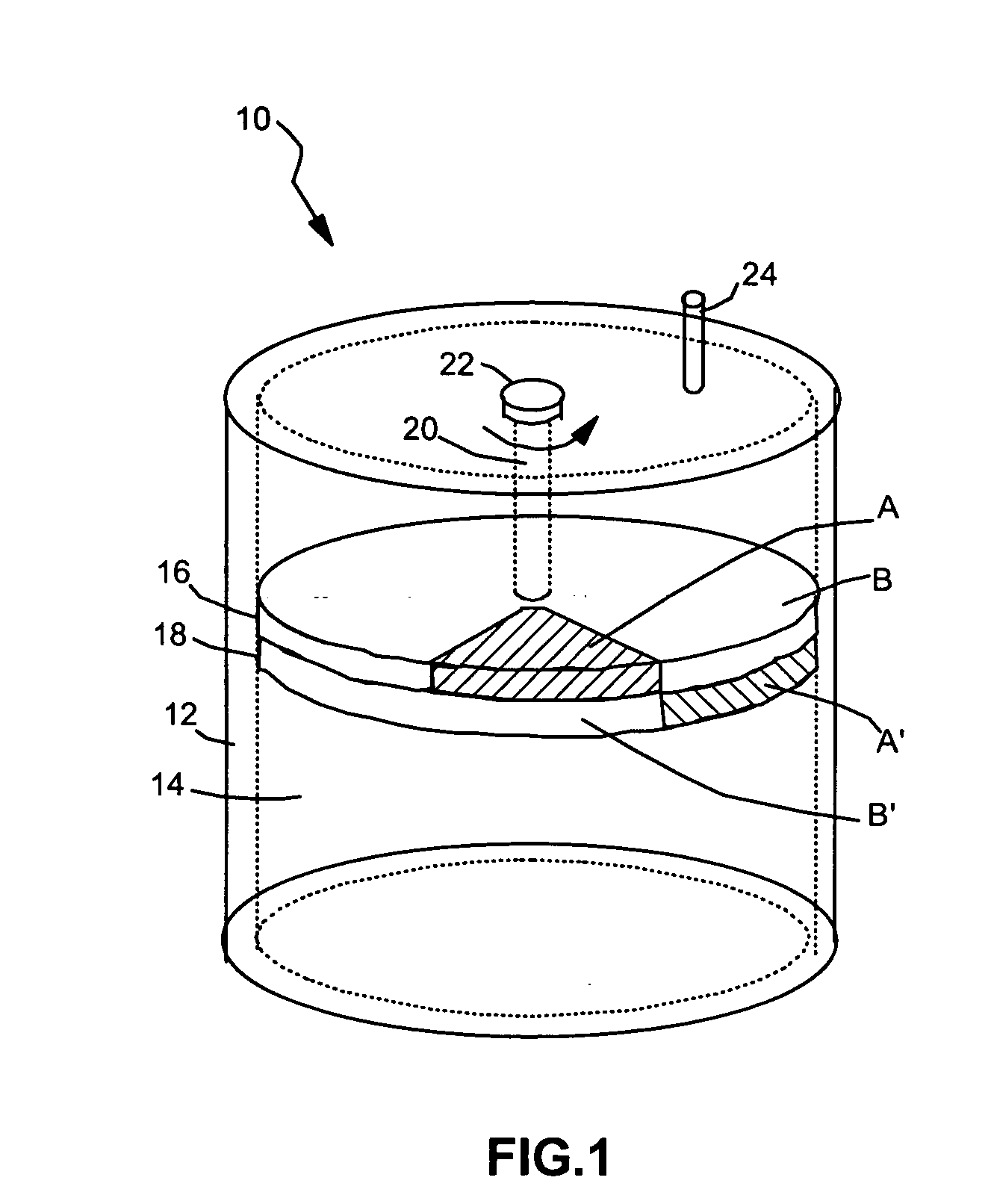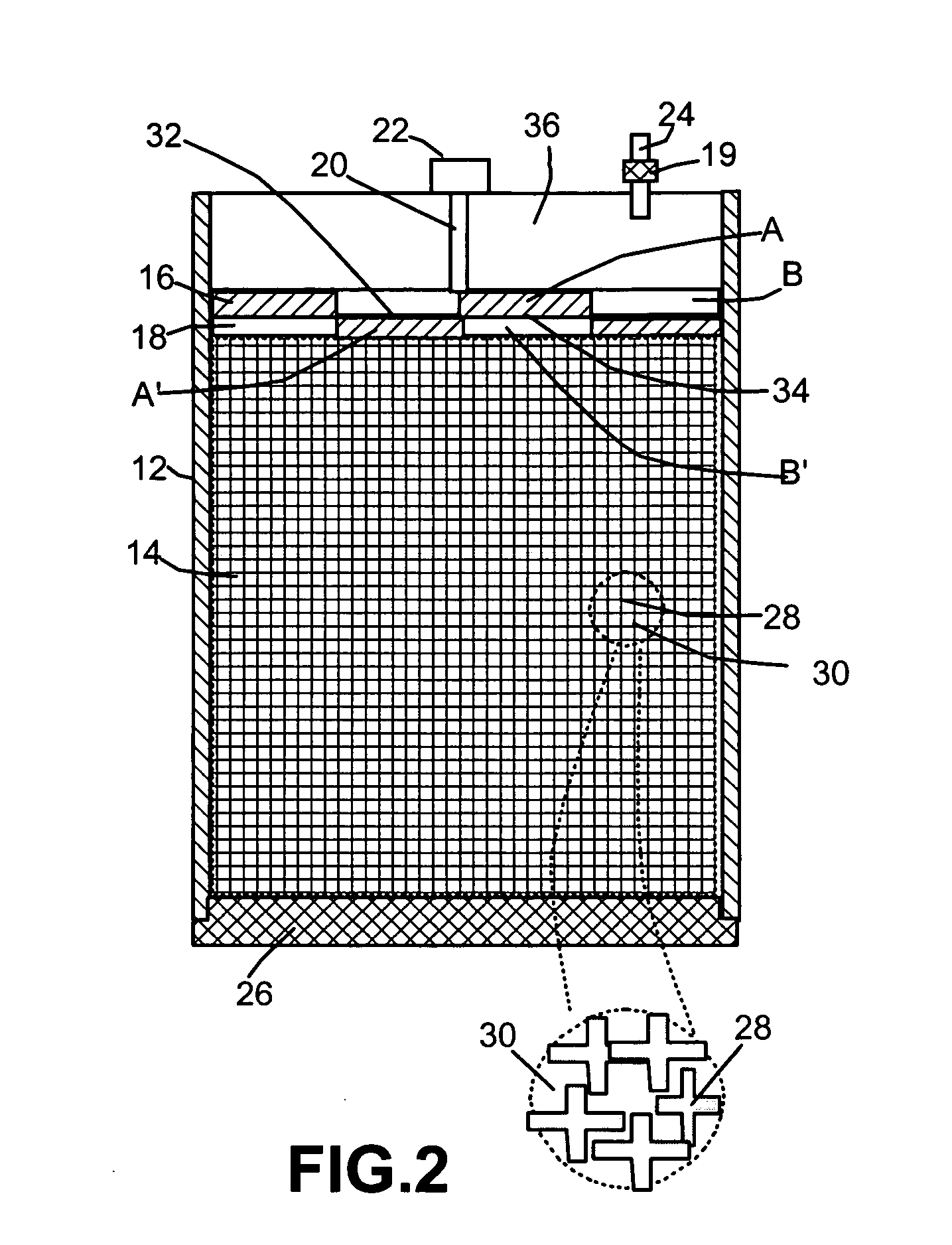Portable hydrogen generator and fuel cell system
a hydrogen generator and fuel cell technology, applied in the direction of electrochemical generators, chemical/physical processes, chemical apparatus and processes, etc., can solve the problems of high cost, potential explosion danger, and lack of an acceptable lightweight and safe hydrogen storage and supply system
- Summary
- Abstract
- Description
- Claims
- Application Information
AI Technical Summary
Benefits of technology
Problems solved by technology
Method used
Image
Examples
Embodiment Construction
[0029] The presently invented portable hydrogen gas generator is based on a class of metal hydride solution fuels that have the following features: The water solution of a metal hydride, particularly a complex metal hydride such as NaBH4, LiBH4, KBH4, Al(BH4)3, TiFeH2, or Pd2H, is quite stable. Some form of catalyst is needed in order for the hydride-water reaction to proceed at an appreciable rate. As a consequence, this reaction is highly controllable and this is one of the great advantages of this system. For example, if NaBH4 is used as the metal hydride component, the reaction of NaBH4 with water (according to Eq.(1)) does not normally proceed spontaneously:
NaBH4+2H2O→NaBO2+4H2(g) (1)
[0030] A small amount of basic solution such as NaOH or KOH could make the solution of NaBH4+2H2O even more stable. The present invention provides a simple and reliable way of bringing a catalyst into contact with such a fuel solution to produce hydrogen at a controlled, but variable rate in re...
PUM
 Login to View More
Login to View More Abstract
Description
Claims
Application Information
 Login to View More
Login to View More - R&D
- Intellectual Property
- Life Sciences
- Materials
- Tech Scout
- Unparalleled Data Quality
- Higher Quality Content
- 60% Fewer Hallucinations
Browse by: Latest US Patents, China's latest patents, Technical Efficacy Thesaurus, Application Domain, Technology Topic, Popular Technical Reports.
© 2025 PatSnap. All rights reserved.Legal|Privacy policy|Modern Slavery Act Transparency Statement|Sitemap|About US| Contact US: help@patsnap.com



